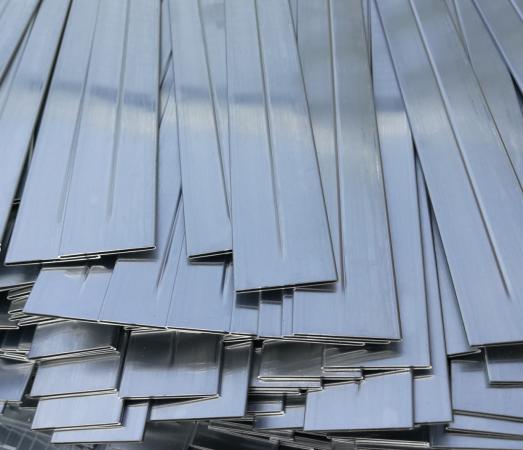Applications of Aluminum Extruded Tubes
2024-05-29
Aluminum extruded tubes are hollow structural components manufactured through the process of aluminum extrusion. This process involves forcing heated aluminum billets or logs through a die to produce a desired cross-sectional shape. Extruded tubes are widely used in various industries due to their lightweight, corrosion resistance, and structural integrity. Here's an overview of aluminum extruded tubes, including their features, benefits, and applications:
Features of Aluminum Extruded Tubes
1. Hollow Structure: Aluminum extruded tubes have a hollow interior, making them lightweight while retaining sufficient strength and stiffness for structural applications.
2. Uniform Cross-Section: The extrusion process allows for the creation of aluminum tubes with uniform cross-sectional profiles, including round, square, rectangular, and custom shapes, to meet specific design requirements.
3. Precision Tolerances: Extruded aluminum tubes can be produced with tight tolerances and consistent dimensions, ensuring accurate fit and compatibility with mating components or assemblies.
4. Smooth Surface Finish: Extruded aluminum tubes typically have a smooth surface finish, free from imperfections, burrs, or sharp edges, which enhances their appearance and facilitates handling and assembly.
5. Corrosion Resistance: Aluminum is inherently resistant to corrosion, making extruded aluminum tubes suitable for outdoor and marine applications where exposure to moisture, humidity, and harsh environments is common.
6. Machinability: Aluminum extruded tubes can be easily machined, drilled, cut, and welded to achieve desired shapes, lengths, and configurations for specific applications.
7. Thermal Conductivity: Aluminum exhibits excellent thermal conductivity properties, allowing extruded tubes to efficiently dissipate heat in heat exchangers, cooling systems, and thermal management applications.
8. Electrical Conductivity: Aluminum is also a good conductor of electricity, making extruded tubes suitable for electrical enclosures, conductive frameworks, and grounding applications.
Benefits of Aluminum Extruded Tubes
1. Lightweight: Aluminum extruded tubes offer high strength-to-weight ratios, making them ideal for applications where weight reduction is desired without sacrificing structural integrity.
2. Cost-Effective: The extrusion process allows for the efficient production of aluminum tubes in large volumes, resulting in cost savings compared to other manufacturing methods.
3. Versatility: Aluminum extruded tubes are available in a wide range of sizes, shapes, and alloys to suit various applications, from architectural and construction projects to automotive and aerospace components.
4. Design Flexibility: The versatility of aluminum extrusion enables the creation of complex tube profiles with intricate geometries and features, providing designers with greater flexibility in product design and innovation.
5. Recyclability: Aluminum is 100% recyclable without loss of properties, making extruded aluminum tubes a sustainable choice for environmentally conscious applications.
6. Low Maintenance: Aluminum extruded tubes require minimal maintenance due to their inherent corrosion resistance and durability, reducing the need for painting, coating, or surface treatments over their service life.
7. Aesthetic Appeal: Extruded aluminum tubes offer a sleek, modern appearance with smooth contours and clean lines, enhancing the visual appeal of architectural, decorative, and consumer products.
Applications of Aluminum Extruded Tubes
1. Architectural and Construction: Aluminum extruded tubes are widely used in architectural and construction applications, including curtain walls, window frames, door frames, handrails, and structural support systems.
2. Automotive and Transportation: Extruded aluminum tubes find use in automotive components such as radiator tubes, air intake systems, fuel lines, and chassis structures due to their lightweight and high strength characteristics.
3. Electrical and Electronics: Aluminum extruded tubes are employed in electrical enclosures, heatsinks, LED lighting fixtures, and electronic housings for their thermal conductivity and electrical insulation properties.
4. HVAC and Refrigeration: Extruded aluminum tubes are utilized in heat exchangers, evaporator coils, condenser coils, and refrigeration systems for efficient heat transfer and thermal management.
5. Furniture and Consumer Products: Aluminum extruded tubes are incorporated into furniture frames, shelving systems, display racks, and consumer products such as bicycles, sports equipment, and outdoor furniture for their lightweight and durable properties.
6. Industrial and Manufacturing: Extruded aluminum tubes serve various industrial and manufacturing applications, including conveyor systems, material handling equipment, pneumatic cylinders, and machinery frames.
7. Aerospace and Defense: Aluminum extruded tubes are used in aerospace and defense applications for structural components, aircraft frames, missile launchers, and satellite structures due to their high strength-to-weight ratio and corrosion resistance.
Conclusion
Aluminum extruded tubes are versatile and cost-effective structural components used in a wide range of industries and applications. With their lightweight, corrosion resistance, and design flexibility, extruded aluminum tubes offer numerous benefits for architects, designers, engineers, and manufacturers seeking reliable and sustainable solutions for their projects. Whether used in architectural, automotive, electrical, HVAC, or aerospace applications, aluminum extruded tubes continue to be a preferred choice for their performance, aesthetics, and environmental advantages.



